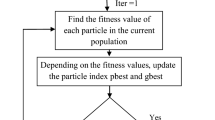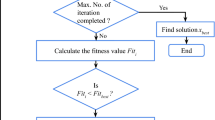Abstract
Order diminution (OD) or model order reduction (MOR), a very important field of System Engineering, has been explored by many researchers. Different methods are available for reducing the complexity of a control system, which are subsequently utilized to get a cost-effective controller. Model order reduction is done by either using classical methods or by using optimization techniques. In optimization algorithms, accuracy, complexity, and convergent rate are the main criteria for comparison in OD. This paper contributes a novel fast and more accurate OD (MOR) technique based on Salp Swarm Optimization. Further, the proposed method is applied to a time-delay system in four different manners. The effectiveness of the proposed technique is shown by reducing four benchmark systems, including a system with time delay and an 84th order system. Finally, the application of OD is shown by designing a reduced-based H-infinity controller for the 84th order system which results in a great saving of time (\(\approx 96\%\)). The obtained results are comparable or better than those from the existing well-known order reduction techniques available in the literature.









Similar content being viewed by others
References
Abdullah Hadeel N (2019) A hybrid bacterial foraging and modified particle swarm optimization for model order reduction. Int J Elect Comput Eng (IJECE) 9(2):1100–1109
Abu-Al-Nadi Dia, Alsmadi Othman MK, Abo-Hammour Zaer S (2011) Reduced order modeling of linear mimo systems using particle swarm optimization. In The seventh international conference on Autonomic and Autonomous Systems (ICAS 2011), pages 3–7, 2011
Afzal Sikander, Rajendra B, Prasad. (2015) A novel order reduction method using cuckoo search algorithm. IETE J Res 61(2):83–90
Ahamad Nafees, Sikander Afzal, Singh Gagan (2019) Substructure preservation based approach for discrete time system approximation. Microsyst Technol 25(2):641–649
Ahamad Nafees, Singh Gagan, Khan Shahala, Sikander Afzal (2017) Design and performance analysis of optimal reduced order h-infinity controller: L1 norm based genetic algorithm technique. In 2017 International Conference on Power and Embedded Drive Control (ICPEDC), pages 8-13. IEEE, 2017
Bhaumik Adrish, Kumar Yashwant, Srivastava Saurabh, Islam Sk Mafizul (2016) Performance studies of a separately excited dc motor speed control fed by a buck converter using optimized pi\(lambda\)d\(mu\) controller. pp 1–6
Biradar Shivanagouda, Hote Yogesh V, Saxena Sahaj (2016) Reduced-order modeling of linear time invariant systems using big bang big crunch optimization and time moment matching method. Appl Math Model 40(15–16):7225–7244
Chahlaoui Younes, Van Dooren Paul (2005) Benchmark examples for model reduction of linear time-invariant dynamical systems. Dimension Reduction of Large-Scale Systems. Springer, Berlin Heidelberg, pp 379–392
Desai SR, Rajendra Prasad (2013) A novel order diminution of lti systems using big bang big crunch optimization and routh approximation. Appl Math Modelling 37(16–17):8016–8028
Eitelberg E (1981) Model reduction by minimizing the weighted equation error. Int J Control 34(6):1113–1123
Eitelberg E (1982) Comments on model reduction by minimizing the equation error. IEEE Trans Autom Control 27(4):1000–1002
El-Attar R, Vidyasagar M (1978) Order reduction by l-1-and l-infinity-norm minimization. IEEE Trans Autom Control 23(4):731–734
Gahinet Pascal, Apkarian Pierre (1994) A linear matrix inequality approach to h-infinity control. Int J Robust Nonlin Cont 4(4):421–448
Ganguli Souvik, Kaur Gagandeep, Sarkar Prasanta (2018) A hybrid intelligent technique for model order reduction in the delta domain: a unified approach. Soft Comput pp 1–14
Garg Harish (2016) A hybrid pso-ga algorithm for constrained optimization problems. Appl Math Comput 274:292–305
Garg Harish (2019) A hybrid gsa-ga algorithm for constrained optimization problems. Inf Sci 478:499–523
Garg Harish (2015) A hybrid ga-gsa algorithm for optimizing the performance of an industrial system by utilizing uncertain data. In Handbook of research on artificial intelligence techniques and algorithms, pages 620–654. IGI Global, 2015
Golberg David E (1989) Genetic algorithms in search, optimization, and machine learning. Addion wesley 1989(102):36
Kennedy James (2010) Particle swarm optimization. Encyclopedia of machine learning. pp 760–766
Mirjalili Seyedali, Gandomi Amir H, Mirjalili Seyedeh Zahra (2017) Shahrzad Saremi, Hossam Faris, and Seyed Mohammad Mirjalili. Salp swarm algorithm: A bio-inspired optimizer for engineering design problems. Adv Eng Softw 114:163–191
Parmar G, Prasad R, Mukherjee S (2007) Order reduction of linear dynamic systems using stability equation method and ga. Int J Comput Inf Syst Sci Eng 1(1):26–32
Philip Boby, Pal Jayanta (2010) An evolutionary computation based approach for reduced order modelling of linear systems. pp 1–8
Prajapati Arvind Kumar, Prasad Rajendra (2019) Order reduction in linear dynamical systems by using improved balanced realization technique. Circuits, Systems, and Signal Processing 1–15
Rahimian Mohammad (2019) Measuring efficiency in dea by differential evolution algorithm. Ann Optimiz Theory Practice 2(1):19–26
Rashid Pathan Siraj, Deepak Panwar (2020) A smart channel estimation approach for lte systems using pso algorithm. Ann Optimiz Theory Practice 3(3):1–13
Sambariya DK, Omveer Sharma (2016) Model order reduction using routh approximation and cuckoo search algorithm. J Automat Cont 4(1):1–9
Seok Lee Kang, Woo Geem Zong (2004) A new structural optimization method based on the harmony search algorithm. Comput Struct 82(9–10):781–798
Sikander A (2016) Reduced order modelling for linear systems and controller design. Indian Institute of Technology Roorkee, Roorkee, India (PhD thesis)
Sikander Afzal, Prasad Rajendra (2015) Linear time-invariant system reduction using a mixed methods approach. Appl Math Model 39(16):4848–4858
Storn Rainer, Price Kenneth (1997) Differential evolution-a simple and efficient heuristic for global optimization over continuous spaces. J Global Optim 11(4):341–359
Vishwakarma CB, Prasad R (2008) Clustering method for reducing order of linear system using pade approximation. IETE J Res 54(5):326–330
White AS, Kelly C (1994) Optimization of a control algorithm using a simulation package. Microprocess Microsyst 18(2):89–94
Author information
Authors and Affiliations
Corresponding author
Ethics declarations
Funding
No funding was received to assist with the preparation of this manuscript.
Conflict of interest
The authors declare that they have no conflict of interest.
Availability of data and material
All data generated or analysed during this study are included in this published article.
Code availability
MarhWorks®
Ethics approval
Not applicable
Additional information
Publisher's Note
Springer Nature remains neutral with regard to jurisdictional claims in published maps and institutional affiliations.
Rights and permissions
About this article
Cite this article
Ahamad, N., Sikander, A. & Singh, G. Order diminution and its application in controller design using salp swarm optimization technique. Int J Syst Assur Eng Manag 13, 933–943 (2022). https://doi.org/10.1007/s13198-021-01367-6
Received:
Revised:
Accepted:
Published:
Issue Date:
DOI: https://doi.org/10.1007/s13198-021-01367-6




